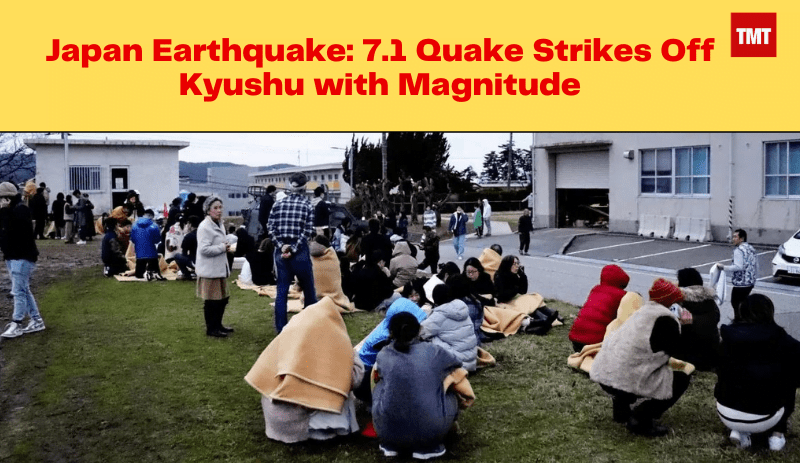Thursday’s strong Japan earthquake off southern Japan caused only minor injuries but raised questions about possible big quakes originating from the Nankai Trough east of the coast.
On Japan’s southern main island of Kyushu, officials said nine persons were hurt, but most of the injuries were minor. There was no recorded major damage, and subsequently, tsunami warnings for the earthquake were withdrawn.
However, the Kyushu quake prompted seismologists to hold an emergency meeting to reassess and raise the level of risk of major quakes associated with the Nankai Trough east of southern Japan.
Japan Earthquake: 7.1 Quake Strikes Off Kyushu with Magnitude
About 30 kilometers (19 miles) below sea level, a magnitude 7.1 earthquake struck seas off the eastern coast of Kyushu, Japan. The quake mostly affected Miyazaki Prefecture’s Nichinan city and environs.
Minor Damage and Instant Impact
On Kyushu’s southern main island, nine persons were reported injured; fortunately, the injuries were generally minor. Although initial tsunami warnings were issued, they were subsequently withdrawn when tsunami waves up to 50 cm (1.6 feet) were observed. No major damage was recorded.
Enhanced Risk of Significant Earthquakes
After the earthquake, seismologists convened an emergency conference to review the Nankai Trough’s potential big earthquake danger. Now the Japan Meteorological Agency shows a higher chance of major earthquakes in the area.
Seismologist Naoshi Hirata of the University of Tokyo cautioned that, during the next 30 years, a magnitude 8 or 9 earthquake from the Nankai Trough had a 70–80% probability. Residents are advised to go over their preparations for earthquake readiness.
To investigate if the earthquake had harmed the adjacent Nankai Trough, the site of prior catastrophic earthquakes, agency seismologists convened an emergency conference. Later on, they concluded that the likelihood of a future earthquake in the region from Kyushu to central Japan is larger than formerly projected. The agency said it will keep closely observing the movements of plates close to the Nankai Trough.
Although they advised coastal residents along the roughly 500 kilometers (310 miles) to review their earthquake readiness, University of Tokyo seismologist Naoshi Hirata, a member of an expert panel, told a joint news conference with JMA officials that there is no immediate risk of a significant earthquake in the near future.

Prime Minister Fumio Kishida of the government and public response has advised people to be informed and prevent disseminating false information as well as to be more catastrophe-ready. Most of the injuries, according to the Fire and Disaster Management Agency, were minor—falls or item strikes.
Aftershocks and Transportation Interference
Over the next week, seismologists cautioned of possible powerful aftershocks. NHK said local train lines were temporarily closed and minor damage occurred at Miyazaki airport. Following safety inspections, Shinkansen services have started usual running.
You May Like: Taylor Swift Concerts Cancelled In Vienna Because Of Terrorist Threat
Guaranteed Nuclear Safety
The Nuclear Regulation Authority verified that the earthquake did not affect any of the twelve nuclear reactors in Kyushu and Shikoku; all remain safe.
The Fire and Disaster Management Agency said nine people were injured, most of them slightly when falling or were hit by objects in Thursday’s Kyushu quake in Miyazaki and neighboring Kagoshima.
Continuous Seismic Concerns in Japan

On the Pacific “Ring of Fire,” Japan is among the most earthquake-prone nations in the world. After the terrible Fukushima accident in 2011, the new earthquake added to the country’s continuous alertness against seismic activity.
Discover more from The Mass Trust
Subscribe to get the latest posts sent to your email.











